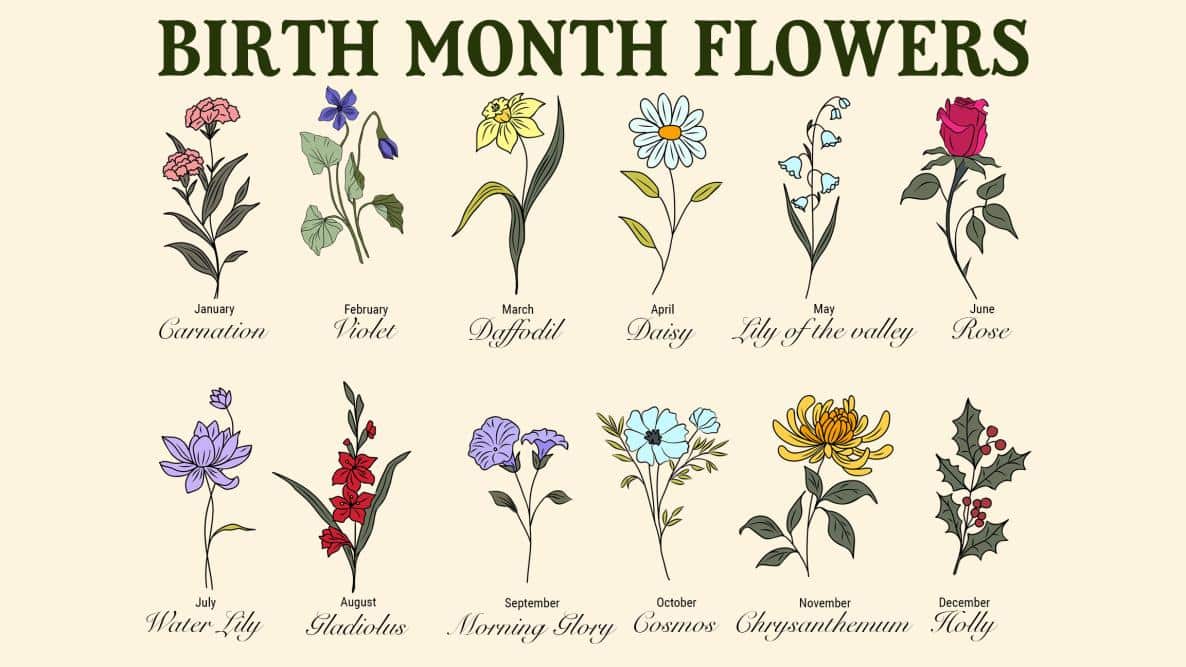Embracing the Birth Flower of January: Snowdrops & Carnations
Happy New Year, lovely parents! Are you starting the year with the joy of a January baby or celebrating a little one’s birthday this month? Alongside the frosted windows and the new calendar page, January brings with it a pair of splendid birth flowers that symbolize the beauty and uniqueness of all January-born individuals: the delicate Snowdrop and the vibrant Carnation.
This guide is here to sprinkle petals of wisdom as we explore the significance of these flowers, their histories, and the practical, nurturing ways you can incorporate them into the birthday celebrations or even daily life of your cherished January child.
What’s the Bloom? Understanding January’s Birth Flowers
First in the spotlight is the Snowdrop. True to its name, this flower bravely pierces through the snow to herald the coming of spring. It’s a symbol of hope and purity – an apt metaphor for the fresh start that a new year represents.
On the other hand, the Carnation bursts January with its ruffled petals and a plethora of colors, each hue with its own distinct meaning. Deep in history and rich with symbolism, carnations convey love, fascination, and distinction. You’ll soon see why they’re so perfect for conveying the deep affection you have for your January babe.
Gardening Glee: Caring for January’s Birth Flowers
Even if you don’t possess a green thumb, worry not! Both Snowdrops and Carnations are delightfully forgiving plants that can bring green cheer into your home with some simple nurturing steps. Here are some quick care tips for each:
- Snowdrops: These bulbs prefer cool to moderate climates and do best when planted in the fall for a winter bloom. Snowdrops love moist soil and partial shade, making them perfect companions for your garden’s more sheltered spots.
- Carnations: Carnations thrive in a sunny spot with well-draining soil. Regular watering, monthly fertilizing, and deadheading will ensure your carnations stay bright and bountiful. They can grow indoors as well, so long as they get enough sunlight.
Creative Blossoms: Celebrating with January’s Birth Flowers
Birth flowers open a bouquet of creative avenues to celebrate and cherish your January-born child. Here’s a sneak peek at the creative ideas this guide will unwrap:
- Whip up some birthday magic by incorporating birth flower themes into the party decor, cakes, and gifts.
- Hands-on fun with DIY flower crafts and gardening projects that you and your child can enjoy together.
- Storytime can be blooming marvelous with tales and legends surrounding Snowdrops and Carnations.
- Design a birth flower-inspired nursery or bedroom space with wall art, textiles, and accessories.
We have a whole garden of inspiration to cover, and by the time the last petal falls in this guide, you’ll be well-equipped to enrich your January darling’s life with birth flower beauty. So, let’s dive deeper into the bed of snowdrops and fields of carnations to unfold their secrets and celebrations!
Step into the world of petals and posies, where every January child is not just a year older but a year more adored, cushioned by the soft beauty of their very own birth flowers. Get ready to discover delightful ways to bring meaning, color, and joy to your child’s life with the graceful Snowdrop and the affectionate Carnation as we continue our journey in the next section of this blooming guide.

Five Things Parents Should Know in Preparing for the Birth Flower of January
1. Understanding Flower Symbolism
Before selecting which January birth flower to grow or gift, it’s important to appreciate the symbolism behind each bloom. Snowdrops stand for hope and purity, making them a heartfelt token for your newborn’s future. Carnations’ message of love and charm can vary with color – pick pink for affection, white for good luck, and avoid yellow, as it may represent disappointment.
2. Seasonal Planting and Growth
Parents should plan for their January flowers wisely. Snowdrops should be planted in the fall to bloom in late winter. Since they are one of the first flowers to bloom in the year, they’ll be a timely reminder of your child’s birth. Carnations, on the other hand, can be planted as seeds indoors and then moved outside in late spring after the last frost for a summer bloom.
3. Indoor vs. Outdoor Cultivation
Consider where you want to see your birth flowers flourish. Snowdrops are suited to outdoor gardens and thrive in a shaded spot. Carnations can adapt to indoor pots if they receive plenty of sunlight. Remember, this choice will dictate the type of care and attention you’ll be giving your flowers.
4. Flower Maintenance and Care
Snowdrops are low-maintenance; they will spread and return each year with minimal intervention. Carnations need more attention with regular watering, deadheading to promote more blooms, and protection from strong winds. Prepare to make these tasks part of your routine to help your flowers thrive.
5. Incorporating Birth Flowers into Celebrations
Planning how to use the blooms during your child’s birthday or special events will create lasting memories. Decide whether you’ll create DIY birthday decorations, include dried flowers in scrapbooks, or even use the flowers as part of a tradition, like planting a new one each year. Think of creative ways to incorporate the birth flowers’ colors and symbolism into your January celebrations.
Equipped with these petals of wisdom, you’re now all set to nurture the Snowdrop and Carnation, creating a blooming connection between your January child and their birth flowers. Whether you’re infusing life into your garden with the vigor of new blossoms or threading the flowers into the fabric of your family’s traditions, the birth flowers of January are more than just plants: they are symbols of your child’s growth, rooted in love and blossoming in individuality.
As these flowers grow, much like your child, they serve as an ever-present reminder of the extraordinary month in which your January gem made their grand entrance into the world. Now let’s embark on a journey brimming with growth, affection, and the joy that only the first steps of a new year – and parenthood – can bring! Continue exploring how these seasonal blooms can translate into unparalleled gestures of love and commemoration for the precious January-born in your life!
See more great Things to Do with Kids in New Zealand here. For more information see here
Disclaimer
The articles available via our website provide general information only and we strongly urge readers to exercise caution and conduct their own thorough research and fact-checking. The information presented should not be taken as absolute truth, and, to the maximum extent permitted by law, we will not be held liable for any inaccuracies or errors in the content. It is essential for individuals to independently verify and validate the information before making any decisions or taking any actions based on the articles.




